The Curious Case of the Self-Objectifying Feminist
If the male gaze demeans and dehumanizes, why do so many women court it?
Not long ago, a British campaign for affirmative consent legislation featured images of women paired with the slogan “I’m asking for it.” The whole point, of course, is that they’re not asking for “it”. The phrase is meant to evoke men who justify their sexual assaults of women by claiming that the victim wanted to be raped. What the women are asking for is legislation to make it a criminal offence for a man to have a sexual encounter with a woman without eliciting an explicit “Yes” from her at every stage (how far we have moved from the relatively simple “No means no”).
The most striking of the ads features the face of Charlotte Proudman, the well-known feminist barrister and zealous anti-male advocate who once denounced a fellow lawyer for complimenting her LinkedIn photo. In the picture, Proudman confronts the viewer with a sexy, smoldering look and a slight half-smile. Her face is carefully made up to accentuate her feminine sexuality, with dark-tinted eyelashes and gleaming red lips outlined in vivid lip gloss. In order to object to men’s sexualization of women, Proudman has sexualized herself.
We are told that the campaign was “deliberately bold and intentionally provocative.” It was designed to “stop viewers in their tracks,” so that we would think about how women are mistreated under the law. Male viewers whose minds stray to sex are, one can only assume, to be brought up short, ashamed and convicted of sin.
The double messaging is deliberate—but confusing. Most people looking at Charlotte Proudman’s sex-kitten face will not, in my opinion, contemplate misogynistic attitudes or the scourge of sexual violence. On the contrary, most viewers will be “stopped in their tracks” by the overtness of Proudman’s sensual self-display. It seems odd that an ad claiming that women should not be seen to invite sexual advances features a woman who seems to be inviting sexual advances.
Feminists have for decades claimed that such sexualization has been forced on women to their detriment. In the fashion industry, in movies, and in daily life, according to feminist philosophers like Sandra Lee Bartky, men compel women to advertise their sexuality as their primary power, to redden their lips, assume sexual poses and flatter the voracious male gaze, becoming “object and prey for the man.”
For centuries, we’re told, patriarchal societies denied women the opportunity to do anything with their lives but live out male sexual fantasies, whether as virgin or whore, Madonna or muse. A male-defined culture made the woman accentuate her youth, shave her legs, remain svelte, and present herself for visual consumption, “living her body as seen by another, an anonymous patriarchal Other”: a degrading spectacle from which all women would be better off free.
Yet here is a campaign designed by feminists to support alleged rape victims, with the same (objectionable) self-presentation by the ad’s primary subject, who is obviously not posing against her will and obviously has many choices about how to present herself. The only difference, it seems, is that in this case, the woman’s self-display is entirely of her own defiant volition.
One wouldn’t think that would be sufficient for a diehard feminist like Proudman, or for any equality-minded modern woman with a thousand choices about what to do with her life.
When I was a little girl in the early 1970s, I took it for granted that self-respecting women wanted to be appreciated for the qualities of their minds and characters. One of the first slogans I remember was the somewhat puzzling “Love me for my mind, not my body.” At the time, around six or seven years old, I thought it would be nice to be loved for any reason. Only later did I understand the implication: to be loved for one’s body was not truly to be loved at all, for the body was a superficial, mutable aspect of the self, destined to deteriorate with time. Moreover, according to the general feminist perspective, the body was all that sexist men cared about, especially the sexual parts. This was objectification, the reduction of the whole woman with all she had to offer (her kindness, her wit, her unique thoughts) to a thing. It was shameful and degrading.
This idea is definitely still current in pervasive talk of objectification. On International Women’s Day of this past year, one X user calling herself Liberal Jane (a “Queer feminist making art about bodily autonomy”) tweeted “Happy #Women’sHistoryMonth to all the badass women and girls who are making this world a better place everyday [sic]. Empowered women empower all women.” The tweet was accompanied by a drawing, perhaps by Jane herself, showing an “empowered” girl complete with nose ring and unshaven legs.
Though the girl is conventionally pretty and slim, with wavy hair, shapely limbs, a plump pink mouth, and painted fingernails, the fact that she has not shaved her legs seems to signal her rejection of male-imposed beauty standards. This girl is a badass because she doesn’t waste her time or energy courting the male gaze. She is not “complicit in her own dehumanization.” Her very existence—given that it is not about inflaming male sexual desire—is allegedly a boon to other women.
But this liberatory vision has certainly not been consistently embodied in modern feminist culture—far from it. Though one can find women whose feminism has given them permission to look as hideous as possible, one can easily find at least as many who seem to go out of their way to be both “obnoxious” and “complicit,” to inflame male desire while pretending to object to it (see Bettina Arndt’s marvelous “The Politics of Cleavage” for a fascinating analysis of such women’s self-justification). Hollywood actresses like Sydney Sweeney, who have made a lucrative career showing off a beautiful body, lament their struggles with “objectification,” which they say is the tendency of their fans (mostly men, one assumes) to be unable to appreciate them “on a human level.” A woman who spends hours every day maintaining her perfect body wants us to believe that she is hurt by male viewers’ appreciation of her perfect body.
It has become common in feminist activism to declaim against the alleged objectification of women by mimicking such objectification without any evident irony. In one typical example, feminist advocates have written Women are not sexual objects in large colored chalk letters, while posing themselves writing it in precisely the way the mythical patriarchy might pose them if the objective were to present them as sexual objects, their breasts and tattooed limbs revealed by tight bikinis and short shorts, their hair tousled and cleavage gaping.
It is not at all unusual for feminist women staging some sort of protest—the cause doesn’t seem to matter—to expose their bodies for attention. “Hundreds of women strip naked to protest against sexual violence,” is a typical headline. In this case, Brazilian women were objecting to “claims by some that women provoke attacks by the way they dress or act.” Argentinian women mounted a naked, screaming objection to domestic violence (pictured at the top). British women stripped naked on video to protest the planned closure of a local hospital. The women of Extinction Rebellion are fond of topless protests, and during the George Floyd-inspired mayhem of 2020, a naked woman did revealing yoga poses in front of Portland riot police.
Other women have found it satisfying to pose for pictures with provocative slogans written on their backs or breasts. “I’m tired of being looked at as a set of holes,” says one, inviting viewers to think of her in the way that allegedly tires her. In the photo, she presents her bare back to the viewer, head turned to the side as if about to glance over her shoulder, one curly tendril of hair escaping to point at her righteous claim.
Millions of women every day flaunt boob and bum, wearing tight tights and crop tops in all situations (even to flamboyantly fix a car), carefully positioning phone cameras to capture cleavage, curves, and crotch for all to see. If this is dehumanization, it is hard to imagine it any more enthusiastically embraced by the vast majority of liberated women. Any man who objects—and some men do—will not be hailed as a proto-feminist or sympathized with about the over-exposure, but jeered at as a repressive prude or a frustrated sexual loser.
One need only walk down the street on a mildly warm day to see women of all ages, but particularly women and girls from early teens to mid-30s, wearing clothing that only a few decades ago would have raised eyebrows and inspired admonishment. It seems there are almost no boundaries left in women’s rush to outdo one another in self-display.
What is particularly striking, moreover, is how often such self-display involves an aggressive dishonesty. Many TikTok and YouTube videos feature women who pretend to advertise a product or showcase a skill, technique, or activity; but are in fact thinly disguised self-advertisements in which the woman herself is the product, whether she’s doing something with a car engine, riding a motorbike, demonstrating a leg press, exercising her glute muscles, cleaning her house, dusting hard-to-reach high places, showing how to do wide-leg stretching, being an auto mechanic, looking after her horse, doing yoga, or thousands of other activities presented as if they are about anything but getting eyes on the woman’s sexy parts.
 Tiktok failed to load.
Tiktok failed to load.Enable 3rd party cookies or use another browser
Some of these women are honest about their interest in inflaming male sexual desire—which has turned into a multi-million-dollar internet industry, not only through OnlyFans but in many other, seemingly more innocent, forums. But often coupled with a woman’s self-display is a vehement, accusatory denial that self-display is the point. A man who assumes at a coffee shop or on the sidewalk that bulging breasts partly-exposed to view are intended to be ogled, even briefly, may be brought up short by an angry rebuttal, or worse. As in the Proudman ad, the titillation of male interest is mobilized in order to make the claim that women do not want to titillate male interest and that the alleged titillation, in fact, is all in the man’s (misogynistic) mind.
There is now something of a cottage industry of women at the gym filming themselves in provocative clothing in order to catch out unwary men looking at, or merely seeming to look at, what the women have put on display—and then pretending to strike a blow for women’s rights by complaining to gym management about the man’s “harassment,” or publishing videos to expose him (see here for one compilation). The point seems to be to attract male sexual attention and to be seen to attract male sexual attention (and advertise the ease with which such attraction has occurred and the abundance of men so attracted) while at the same time claiming not to have sought the attention.
There are even alleged cases of young men with visual impairment being called out (and kicked out) for making a woman uncomfortable by their inadvertent (non) “staring.” The mix of liberation and repression, sex-kitten and prude is not entirely new, of course—invitation and prohibition have always made a sexually charged pairing—but it has been given a new impetus by feminist dictates, under which men’s claims of sexual attraction are dismissed as a cover for brute inclination (more on this in a moment), and women tell themselves, and others, that their mode of (un)dress has nothing to do with men.
The phenomenon would be remarkable enough, and troublesome for many men (as my friend Steve Brule investigated here), if it were confined to leisure activities and internet spaces alone, but it is not. It has invaded public culture and government, higher education and politics, with humiliating consequences for men caught looking at cleavage or rump.
Even the once-sober precincts of the hospital ward have been transformed by some women’s seeming obsession with showing off their sexual wares. Nursing uniforms have recently been modernized to allow the female wearer to showcase her breasts and ass in a style far closer to contemporary gym-wear than the once-drab and unisex scrub (isn’t it interesting how in the era of women’s alleged equality, many women refuse to minimize physical sex distinctions?). The internet abounds with women showing off these sexy nursing outfits, pretending that there isn’t anything at all inconsiderate or contra-indicated in a nurse’s decision to draw sexual attention to her body in an environment where many of her patients are helpless and trapped: vulnerable, medicated, possibly frightened, and in pain.
 Tiktok failed to load.
Tiktok failed to load.Enable 3rd party cookies or use another browser
At the same time that such women deliberately choose the more eye-catching clothing, allegations of sexual harassment abound to position these nurses as victims of unwanted attention. An article posted by the American Geriatric Society states that many nurses (more than half in their lifetimes, according to survey data, and more than in any other profession) experience what the article calls, somewhat ludicrously, “workplace violence.” Such “violence” may include “using terms like ‘honey’ or ‘baby,’” and “intentionally looking at someone’s body parts,” indignities that leave nurses suffering “burnout, anxiety, post-traumatic stress disorder, increased medical errors, and decreased quality of patient care.” Notable in the list is the implication that medical errors and decreased quality of patient care are injuries primarily experienced by the nurses and for which others are to blame.
It is never suggested that nurses themselves are engaging in sexual harassment in the way they dress or are in any way responsible for “harms” such as being looked at. I have seen nurses taunting elderly male patients for their disabilities and incapacity; they are certainly not always blameless in interactions. But the article places all responsibility for sexualization on outside factors, going so far as to state that “Nurses may be more subject to sexual harassment due to sexual characterization in the media or misinterpretation of their caring and gentle demeanor.”
This is the standard modern perspective: women and girls are victims, and even minor male actions such as complimenting, looking, or making sexual remarks are violations of their dignity and safety. Girls’ and women’s own overt self-display, which often begins at an early age (even before puberty), is denied or, perversely, celebrated as a form of liberation while boys’ and young men’s responses to such display are harshly stigmatized.
It’s true that earlier eras had prohibitions against girls’ and women’s (and boys’ and men’s) sexual freedom. This was at least in part because of a recognition that girls begin to pose and pout, to dress and move provocatively long before they even understand what they are doing, often unaware of the powerful sexual feelings that their gestures and looks provoke in the boys and young men around them. Rules of comportment, which restricted both male and female behavior, were a response to fears about the results of feminine heedlessness and sexual display.
Today, the natural reality of female sexual precociousness and male susceptibility are almost never openly discussed. According to feminist pundits, there is nothing natural, and certainly nothing benign, in male sexual attraction to women or in the male desire to look at, touch, fondle, and have sexual relations with a woman. In the now common perception, boys and men seek to use and abuse women for selfish pleasure.
The pleasure is not even necessarily sexual, we are told (for to recognize it as sexual would be to recognize it as natural). Rather, boys’ and men’s interest is said to manifest the urge to dominate, to control, and to dehumanize (for a helpful overview of the feminist argument about men’s degrading use of women, see this discussion of Catharine MacKinnon and Andrea Dworkin). The enormous power of female sexual allure is not acknowledged; or if it is, it is presented as a power that women would prefer not to have. Thus, feminism has been successful in thoroughly demonizing one of the most enduring bonds between men and women: the man’s sexual desire, and the woman’s desire to be desired.
It is surely significant that as feminism has advanced, and as women have gained more freedom and choices in their lives, the intensity of female sexual display has not only not diminished but has actually increased to extraordinary levels, despite feminist insistence that the problem of unwanted male sexual attention has never been greater. According to feminists such as Charlotte Proudman, (as, for example, in this discussion starting at 11:00) women are everywhere in “constant fear” of men, harassed on the street, catcalled and insulted, hounded and terrorized. The United Kingdom, often at the forefront of repressive feminist legislation, has already moved to criminalize cat-calling and staring, while it has effectively been ruled out of order to talk about women’s own sexual provocation, their competitive drive to gain sexual attention from men.
What, if anything, is to be done? I don’t expect a significant number of women to get real about their behaviors: either to admit their (abusive) sexual power or to empathetically imagine the awkwardness for boys and men.
The many contradictions and denials, projection and self-exculpation, the reflex misandry and vehement victimology all suggest that at the heart of female nature is a deep conflict about sex that cannot unilaterally, or even primarily, be blamed on men. While a well-funded war on male sexual nature escalates, honest self-reflection about female desire and female power is in short supply.



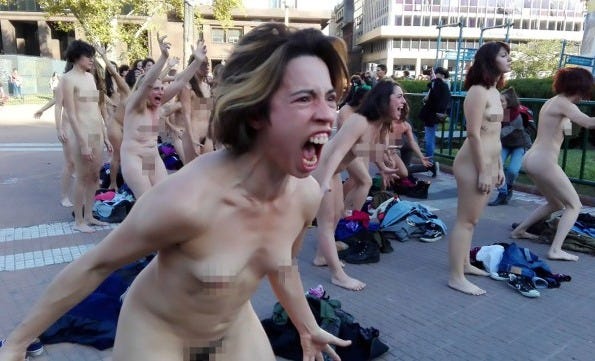
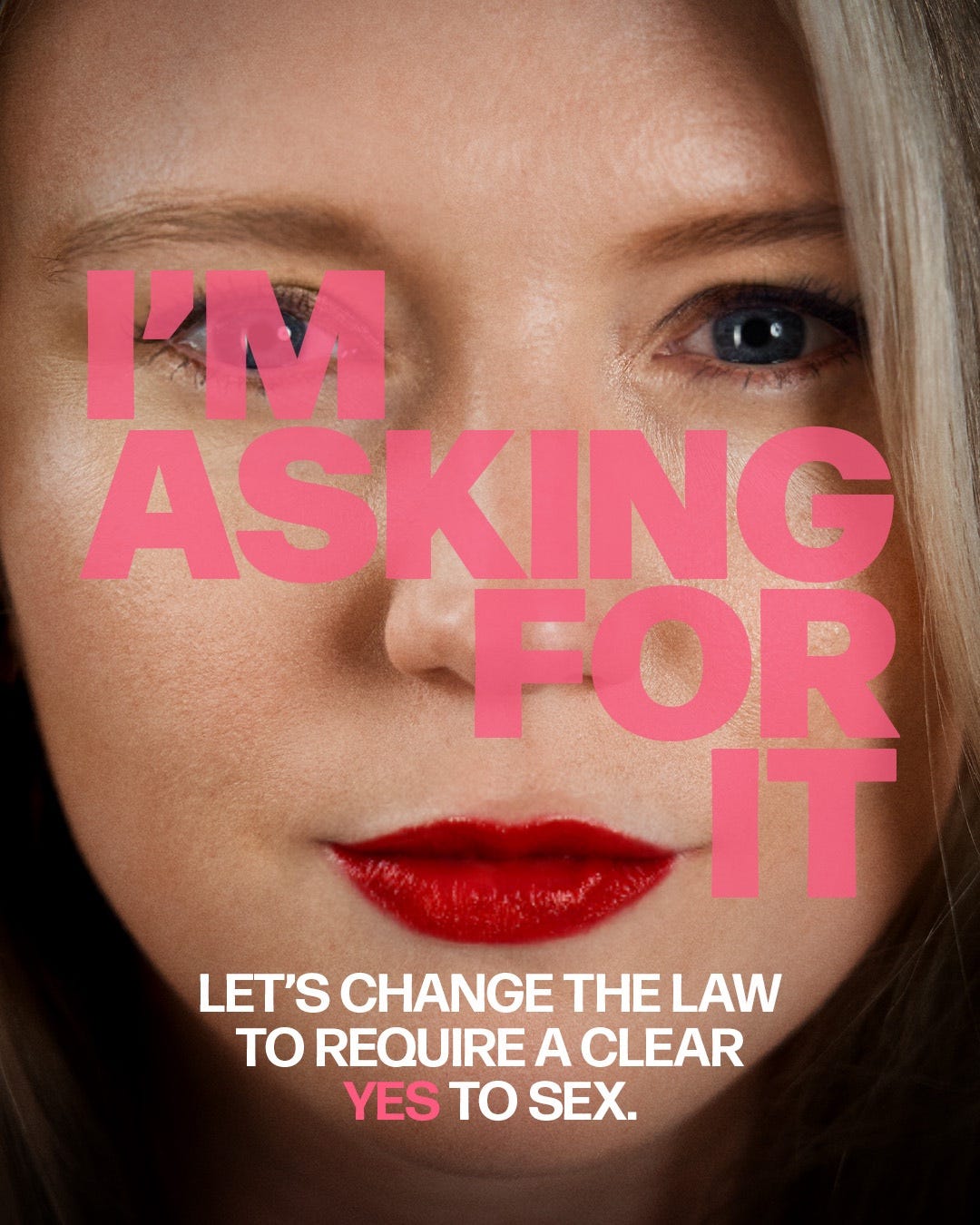
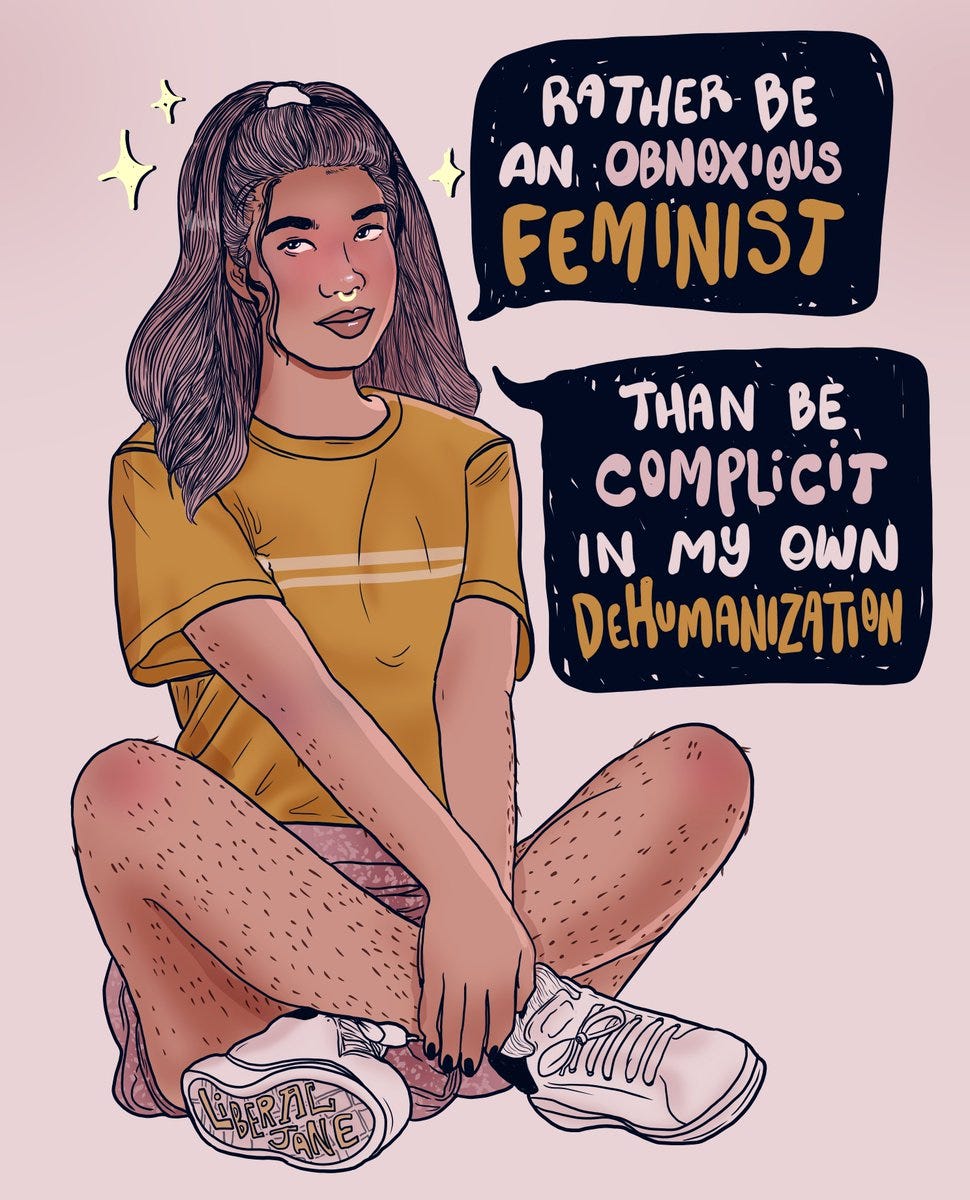
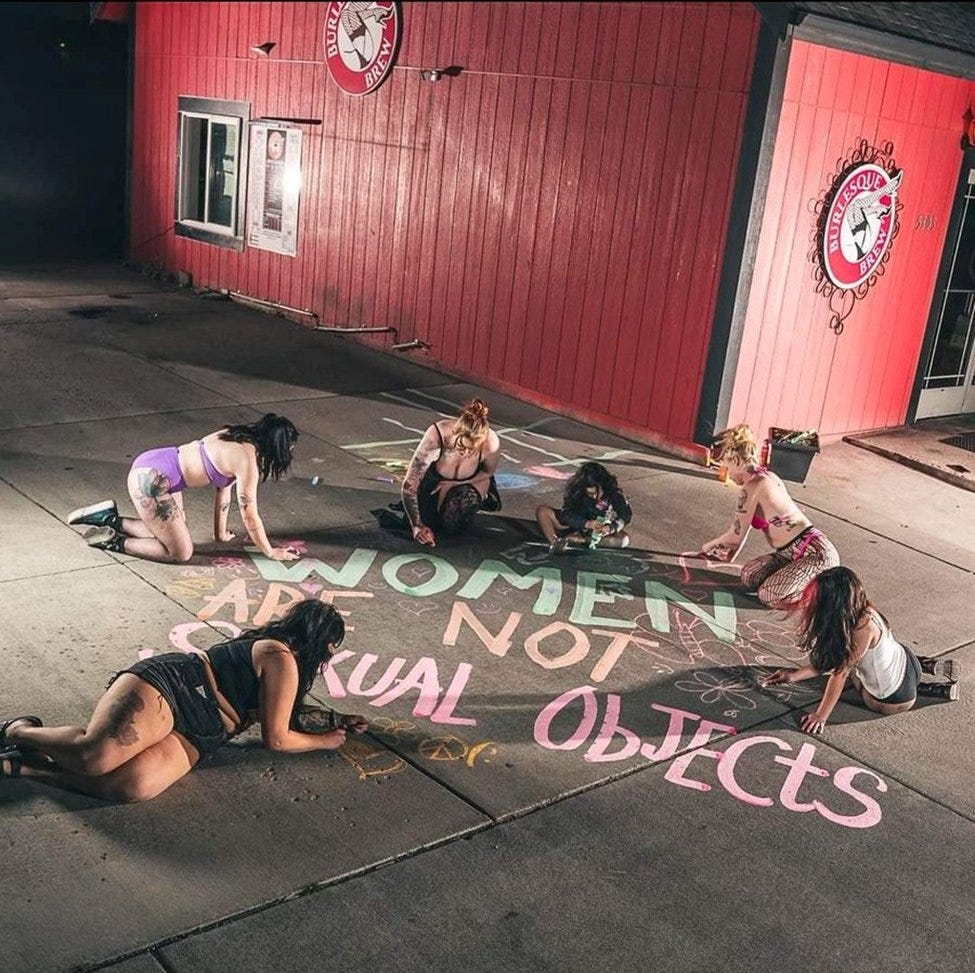
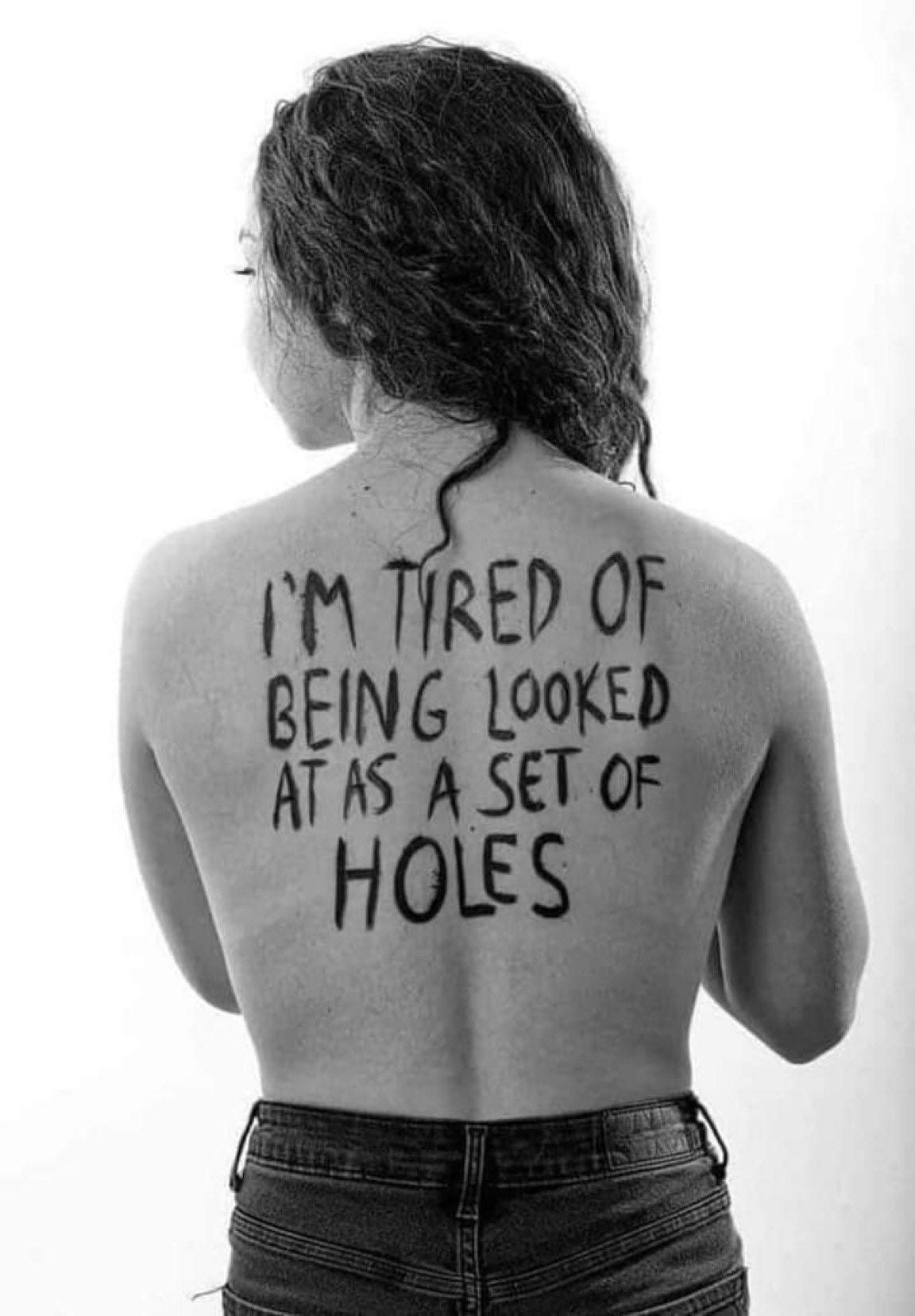



I've rarely read a more "pick me" view and the comment section is sadly supportive of this conservative view, with some equally predictable outright misogyny thrown in.
Telling women they will only be taken serious if they dress or behave in a particular way is what the patriarchy does, however much you try to validate your opinion as supposedly analytical observation.
*You* are explicitly sexualizing us. Women exist. Women exist with and without tits and ass. We do not need to be harassed for existing in our bodies.
Rape has nothing to do with clothing or sexualization. It’s about power. By your logic, the conventionally unattractive have nothing to fear, and yet we do.
The point is not to show off our bodies, but to illustrate that no matter how much we show them, men are able to show restraint when they choose to do so, say, during a naked demonstration.